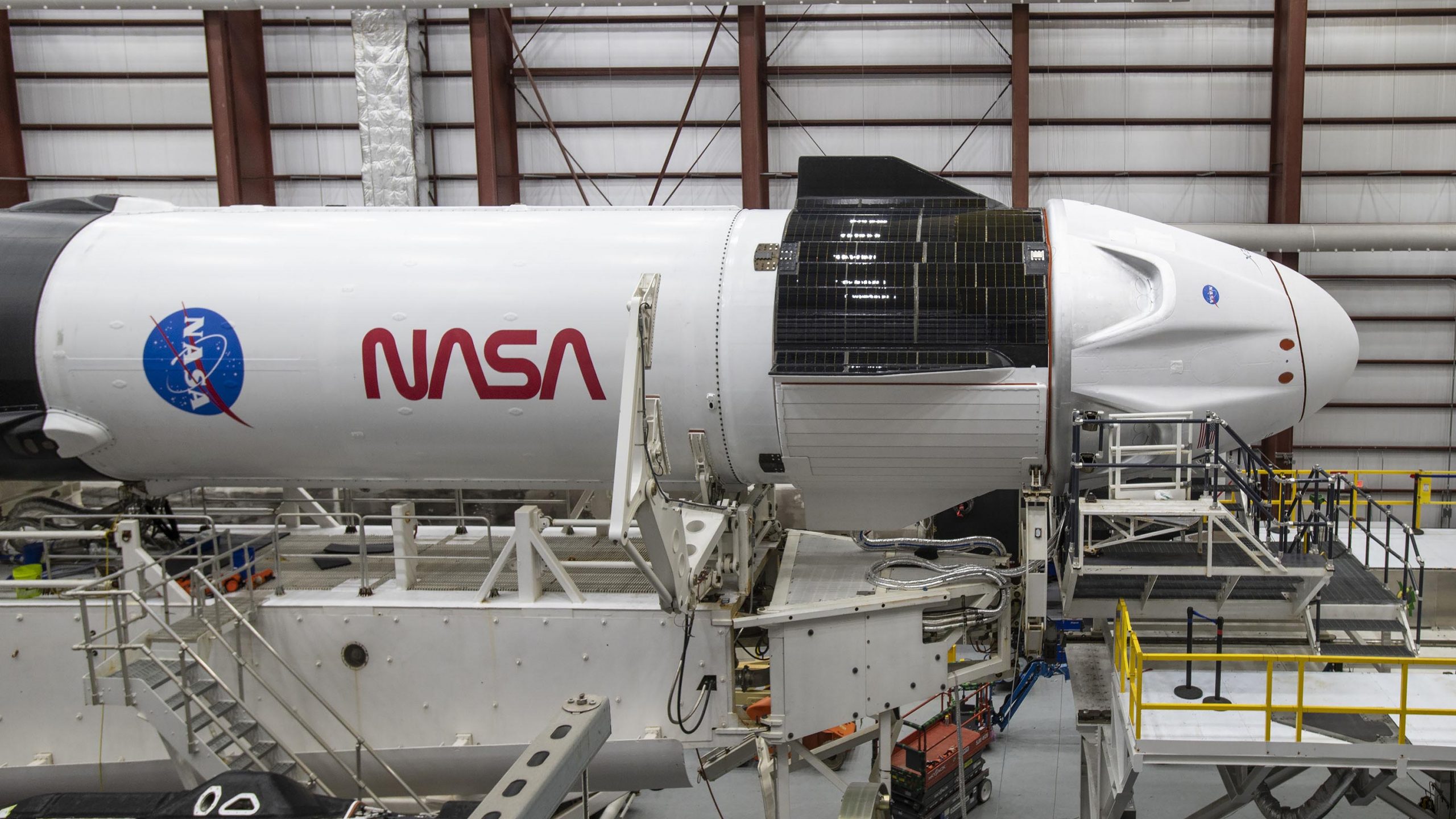
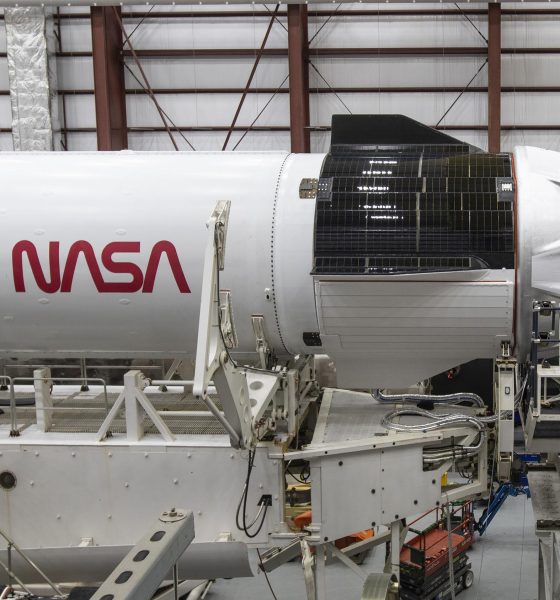
News
SpaceX’s first operational NASA astronaut mission (almost) ready for launch
SpaceX and NASA have completed the last major review standing between Crew Dragon and Falcon 9 and the duo’s operational astronaut launch debut, meaning that a routine static fire test is all that really remains.
On Thursday, November 5, the SpaceX Crew Dragon capsule – named “Resilience” – of the first operational SpaceX mission to and from the International Space Station (ISS) as a part of NASA’s Commercial Crew Program (CCP) arrived at the Launch Complex 39A hangar at the Kennedy Space Center.
SpaceX is one of two commercial partners that NASA works with to develop a reliable system of crew transportation to and from the International Space Station. Since the retirement of NASA’s space shuttle program, the United States has been reliant on Russia and its Soyuz program to fulfill the task of maintaining an American presence aboard the ISS. With SpaceX’s first operational CCP mission – dubbed Crew-1 – a new era of commercialized crewed spaceflight will be ushered in.
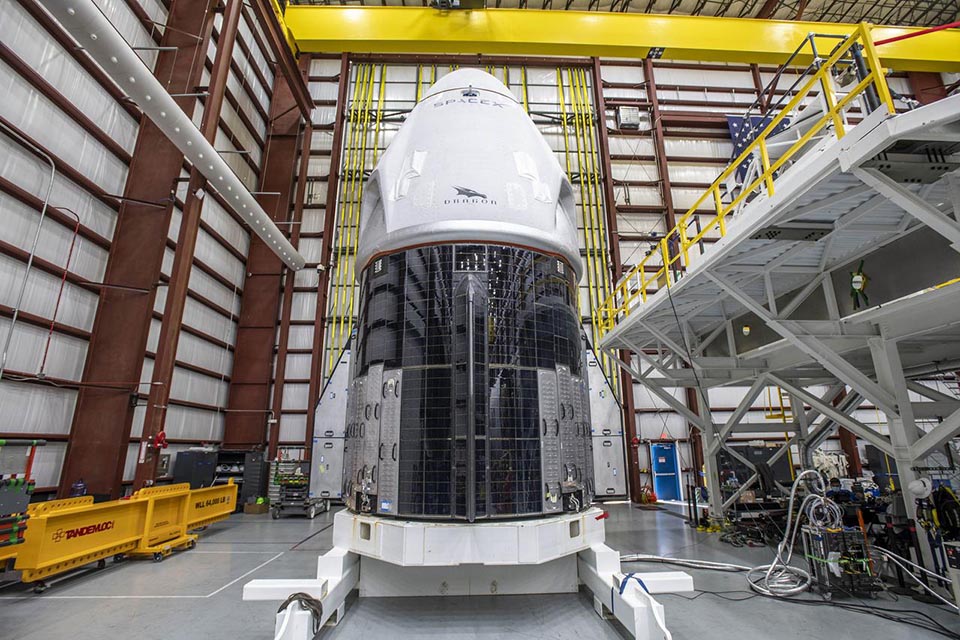
On November 10th, SpaceX and NASA officials convened for a press conference following the successful completion of the Crew-1 flight readiness review (FRR) – the last major review standing between the assembled hardware and liftoff. SpaceX senior director of Human Spaceflight Programs Benji Reed listed off an array of historic milestones crossed as part of the FRR, noting that the review’s completion means that NASA has officially certified SpaceX for operational astronaut launches, making it the first and only private company in the world capable of safely launching humans.
Additionally, Reed revealed that Crew-1 and Cargo Dragon 2’s imminent December 2nd launch debut will together ring in a potentially unprecedented era in commercial spaceflight. Crew-1 – barring surprises in orbit – will further mark the longest continuous American spaceflight ever, beating a record set by a Skylab mission in the early 1970s if Crew Dragon remains in orbit for the full planned 180-210 days.
“Over the next 15 months, we will fly seven Crew and Cargo Dragon missions for NASA. That means that starting with Crew-1, there will be a continuous presence of SpaceX Dragons on orbit. Starting with the cargo mission CRS-21, every time we launch a Dragon, there will be two Dragons in space – simultaneously – for extended periods of time. Truly, we are returning the United States’ capability for full launch services and we are very, very honored to be a part of that.”
Benji Reed, SpaceX – November 10th, 2020
On a more technical level, Reed noted that SpaceX has decided to replace a component of Falcon 9’s upper stage ‘purge system’ and will bring the whole rocket horizontal later today (November 10th). That swap will delay Falcon 9’s Crew-1 static fire from ~8pm today to ~8pm on Wednesday, November 11th. The Crew-1 mission remains on track to launch no earlier than (NET) 7:49 pm EDT, Saturday, November 14th.
The Crew’s All Here
Three days later, after departing Johnson Space Center via a chartered flight from Ellington Field on Sunday, November 8, the four crew members of the Crew-1 mission arrived in Florida by plane at Kennedy Space Center’s former space shuttle landing facility.
Upon arrival, the crew members – NASA astronauts Victor Glover, Mike Hopkins, Shannon Walker, and Soichi Noguchi of the Japanese Aerospace Exploration Agency – were greeted by NASA Administrator Jim Bridenstine, Agency Deputy Administrator Jim Morhard, Kennedy Space Center Director Bob Cabana, and manager of JAXA’s ISS program, Junichi Sakai.
“Today we are taking another big leap in this transformation in how we do human spaceflight. What we’re talking about here is the commercialization of space. NASA is one customer of many customers in a very robust commercial marketplace in low-Earth orbit,” NASA Administrator Jim Bridenstine said.
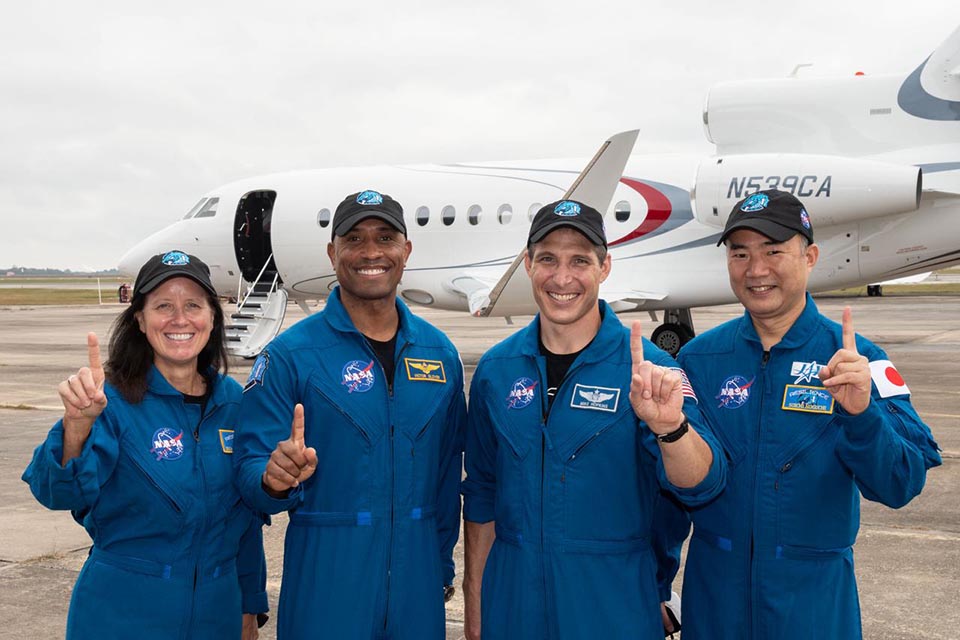
Final Milestones Ahead of Flight
After arriving at their launch site in Florida, the four-member crew made the short journey to the LC-39A horizontal integration facility acquainting themselves with their “Resilience” Dragon capsule and the SpaceX Falcon 9 booster that will soon propel them to space. The Dragon capsule had been oriented horizontally and mated with the Falcon 9 first and second stages.
Initially targeting liftoff on October 31, the Crew-1 mission experienced a delay after the SpaceX GPSIII-SV04 B1062 Falcon 9 vehicle suffered an early start anomaly initiating an autonomous pad abort at T-2 seconds.
As the GPS B1062 and Crew-1 B1061 Falcon 9 vehicles were likely built simultaneously, SpaceX and NASA decided to take time to inspect all engines, as well as those of the upcoming NASA, European Space Agency Michael Freilich Sentinel-6 booster, B1063. After replacing a number of engines, both missions are on track to launch before the end of the month.
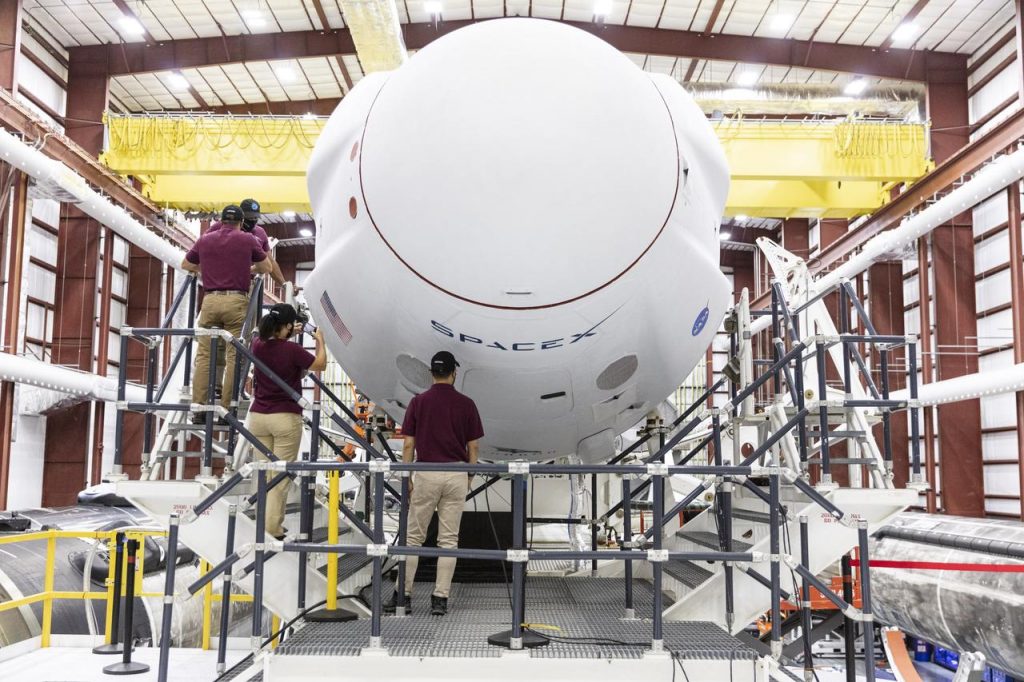
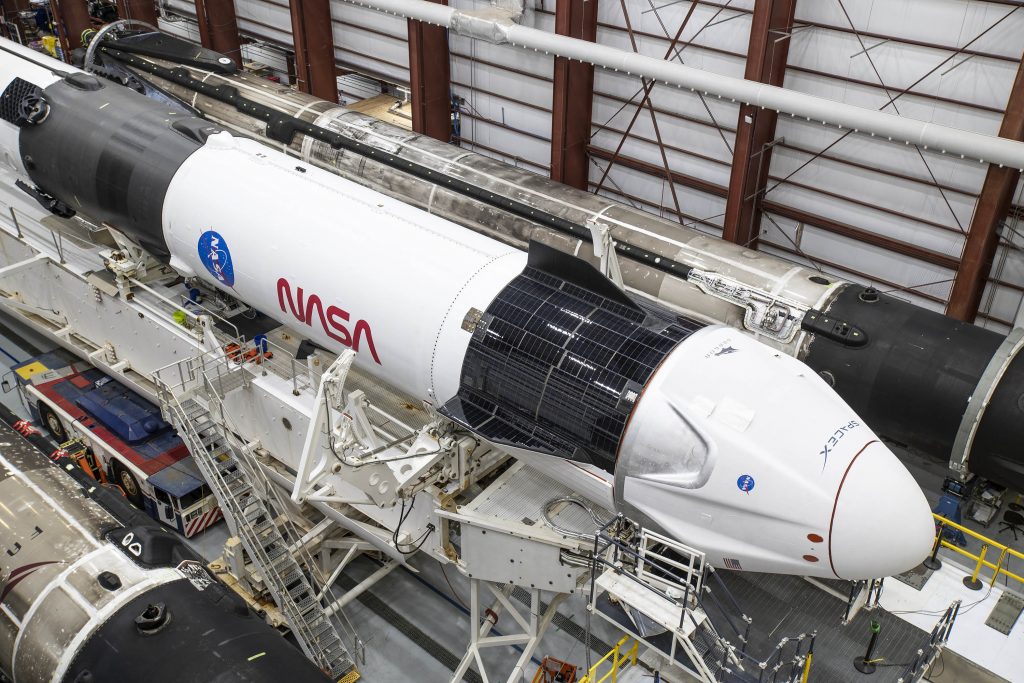
On Monday, November 9, SpaceX and NASA managers began the tedious process of completing a flight readiness review. The meeting that extends an entire day, or two, involves managers from SpaceX, NASA’s Commercial Crew Program, and the International Space Station program collaborating in discussion to conduct a joint pre-flight examination of all previous specialized reviews – such as ones done specifically for the Dragon capsule or the Falcon 9 booster. The meeting also serves as an opportunity for every department to discuss and close out any remaining concerns. The meeting began at 9 am on Monday, November 9, and concluded on Tuesday, November 10.

The B1061 Falcon 9 booster and Crew Dragon “Resilience” capsule were transported the short distance from the hangar to the launchpad ahead of the test firing of the nine Merlin 1D engines – a final test to certify all flight-critical hardware ahead of the launch attempt. Clearing the final hurdle before flight, SpaceX officially acknowledged that the Crew-1 mission is targeting liftoff at 7:49pm EST (0049 UTC on Nov. 15) on Saturday, November 14 from LC-39A at the Kennedy Space Center.
Following liftoff, the Dragon capsule “Resilience” will separate from the Falcon 9 first stage and continue to propel its crew on an uphill journey to rendevous with the ISS approximately seven and a half hours later.
Live hosted NASA and SpaceX coverage of the events will begin approximately three and half hours prior to liftoff at 3:30 pm EST and will be available on NASA TV and the SpaceX website.
Check out Teslarati’s newsletters for prompt updates, on-the-ground perspectives, and unique glimpses of SpaceX’s rocket launch and recovery processes.

News
Tesla FSD fleet is nearing 7 billion total miles, including 2.5 billion city miles
As can be seen on Tesla’s official FSD webpage, vehicles equipped with the system have now navigated over 6.99 billion miles.

Tesla’s Full Self-Driving (Supervised) fleet is closing in on almost 7 billion total miles driven, as per data posted by the company on its official FSD webpage.
These figures hint at the massive scale of data fueling Tesla’s rapid FSD improvements, which have been quite notable as of late.
FSD mileage milestones
As can be seen on Tesla’s official FSD webpage, vehicles equipped with the system have now navigated over 6.99 billion miles. Tesla owner and avid FSD tester Whole Mars Catalog also shared a screenshot indicating that from the nearly 7 billion miles traveled by the FSD fleet, more than 2.5 billion miles were driven inside cities.
City miles are particularly valuable for complex urban scenarios like unprotected turns, pedestrian interactions, and traffic lights. This is also the difference-maker for FSD, as only complex solutions, such as Waymo’s self-driving taxis, operate similarly on inner-city streets. And even then, incidents such as the San Francisco blackouts have proven challenging for sensor-rich vehicles like Waymos.
Tesla’s data edge
Tesla has a number of advantages in the autonomous vehicle sector, one of which is the size of its fleet and the number of vehicles training FSD on real-world roads. Tesla’s nearly 7 billion FSD miles then allow the company to roll out updates that make its vehicles behave like they are being driven by experienced drivers, even if they are operating on their own.
So notable are Tesla’s improvements to FSD that NVIDIA Director of Robotics Jim Fan, after experiencing FSD v14, noted that the system is the first AI that passes what he described as a “Physical Turing Test.”
“Despite knowing exactly how robot learning works, I still find it magical watching the steering wheel turn by itself. First it feels surreal, next it becomes routine. Then, like the smartphone, taking it away actively hurts. This is how humanity gets rewired and glued to god-like technologies,” Fan wrote in a post on X.
News
Tesla starts showing how FSD will change lives in Europe
Local officials tested the system on narrow country roads and were impressed by FSD’s smooth, human-like driving, with some calling the service a game-changer for everyday life in areas that are far from urban centers.

Tesla has launched Europe’s first public shuttle service using Full Self-Driving (Supervised) in the rural Eifelkreis Bitburg-Prüm region of Germany, demonstrating how the technology can restore independence and mobility for people who struggle with limited transport options.
Local officials tested the system on narrow country roads and were impressed by FSD’s smooth, human-like driving, with some calling the service a game-changer for everyday life in areas that are far from urban centers.
Officials see real impact on rural residents
Arzfeld Mayor Johannes Kuhl and District Administrator Andreas Kruppert personally tested the Tesla shuttle service. This allowed them to see just how well FSD navigated winding lanes and rural roads confidently. Kruppert said, “Autonomous driving sounds like science fiction to many, but we simply see here that it works totally well in rural regions too.” Kuhl, for his part, also noted that FSD “feels like a very experienced driver.”
The pilot complements the area’s “Citizen Bus” program, which provides on-demand rides for elderly residents who can no longer drive themselves. Tesla Europe shared a video of a demonstration of the service, highlighting how FSD gives people their freedom back, even in places where public transport is not as prevalent.
What the Ministry for Economic Affairs and Transport says
Rhineland-Palatinate’s Minister Daniela Schmitt supported the project, praising the collaboration that made this “first of its kind in Europe” possible. As per the ministry, the rural rollout for the service shows FSD’s potential beyond major cities, and it delivers tangible benefits like grocery runs, doctor visits, and social connections for isolated residents.
“Reliable and flexible mobility is especially vital in rural areas. With the launch of a shuttle service using self-driving vehicles (FSD supervised) by Tesla in the Eifelkreis Bitburg-Prüm, an innovative pilot project is now getting underway that complements local community bus services. It is the first project of its kind in Europe.
“The result is a real gain for rural mobility: greater accessibility, more flexibility and tangible benefits for everyday life. A strong signal for innovation, cooperation and future-oriented mobility beyond urban centers,” the ministry wrote in a LinkedIn post.
News
Tesla China quietly posts Robotaxi-related job listing
Tesla China is currently seeking a Low Voltage Electrical Engineer to work on circuit board design for the company’s autonomous vehicles.

Tesla has posted a new job listing in Shanghai explicitly tied to its Robotaxi program, fueling speculation that the company is preparing to launch its dedicated autonomous ride-hailing service in China.
As noted in the listing, Tesla China is currently seeking a Low Voltage Electrical Engineer to work on circuit board design for the company’s autonomous vehicles.
Robotaxi-specific role
The listing, which was shared on social media platform X by industry watcher @tslaming, suggested that Tesla China is looking to fill the role urgently. The job listing itself specifically mentions that the person hired for the role will be working on the Low Voltage Hardware team, which would design the circuit boards that would serve as the nervous system of the Robotaxi.
Key tasks for the role, as indicated in the job listing, include collaboration with PCB layout, firmware, mechanical, program management, and validation teams, among other responsibilities. The role is based in Shanghai.
China Robotaxi launch
China represents a massive potential market for robotaxis, with its dense urban centers and supportive policies in select cities. Tesla has limited permission to roll out FSD in the country, though despite this, its vehicles have been hailed as among the best in the market when it comes to autonomous features. So far, at least, it appears that China supports Tesla’s FSD and Robotaxi rollout.
This was hinted at in November, when Tesla brought the Cybercab to the 8th China International Import Expo (CIIE) in Shanghai, marking the first time that the autonomous two-seater was brought to the Asia-Pacific region. The vehicle, despite not having a release date in China, received a significant amount of interest among the event’s attendees.








